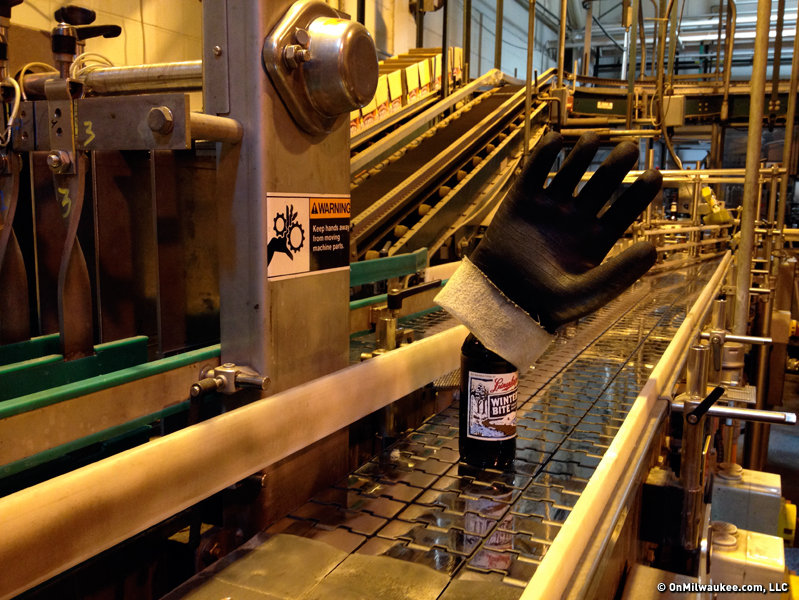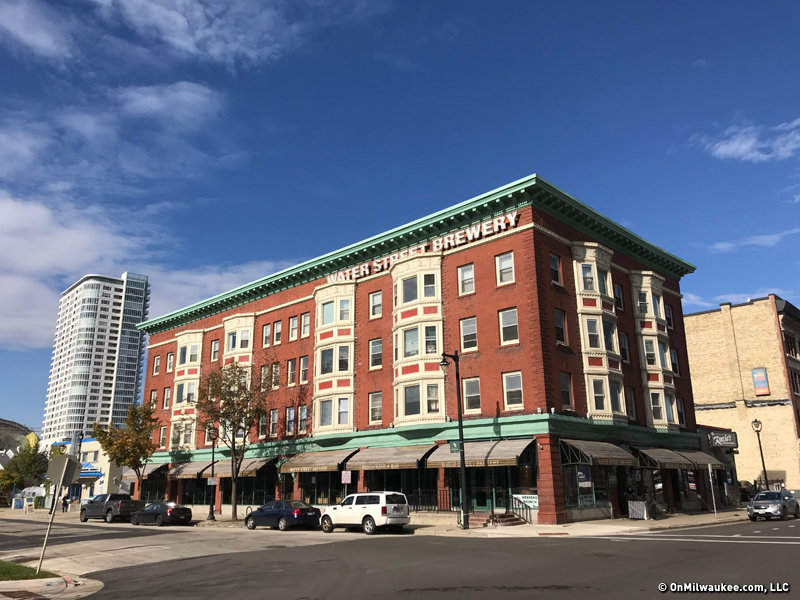"Bar Month" at OnMilwaukee is brought to you by Miller Brewing Company, calling Milwaukee home since 1855. For the entire month of March, we're serving up fun articles on bars, clubs and beverages – including guides, the latest trends, bar reviews, the results of our Best of Bars poll and more. Grab a designated driver and dive in!
In 2015, news emerged that the former Forst Keller Restaurant building, 1037 W. Juneau Ave., at the old Pabst Brewery site, which was shuttered in 1996, would re-open as a new Pabst Brewery.
Despite some changes to the plan and some delays, the Pabst Brewing Milwaukee is hosting a media preview today – we got an early first look – in advance of its official opening, slated for Milwaukee Day on April 14.
A grand opening block party will take place in May.

Many have watched with delight as the Victorian Gothic structure with a freeway view got a new roof and had more than a century’s worth of grime cleaned from its cream city brick exterior.
The building was born as the home to the First German Methodist Church in 1872-73. Finding itself surrounded by an ever-growing brewery, the congregation moved to a new church on 21st and Highland in the 1890s and sold this building to Pabst. In 1898, the brewery tapped architect Carl Linde to convert it into a tavern and restaurant at a cost of $4,500.
The Forst Keller opened there and was run early on by Richard Becker. For a time, it was also home to a trio of vocal music groups – Albert Kittelmann’s Liederkranz Club, the Lieder Tafel and the Bel Canto Chorus – but the Forst Keller lived on.
From 1937 to 1960, it was run by brother Fritz and Richard Baumann, whose wives did the cooking, according to a 1973 newspaper article. When Adi Binder ran the place from 1964 to ‘71, the same source noted, his mother "Mutti" did the cooking.
After closing for six months, the Forst Keller reopened in ‘71 under the watchful eye of Karl and Ann Skacel, of Delafield, who also had Karl and Gretchen’s Supper Club out on Lake Nagawicka.
The brewery used the slightly smaller upper floor as a training area, and when the restaurant closed in 1973, it planned to create a museum in the building. For a time, it served as a guest center and events space for Pabst, too.
Now, architects Engberg Anderson have designed a sleek new space for the returning brewery and its taproom, preserving old elements – such as the stained glass above the main entrance – while giving it a bright, modern feel.

Entering off Juneau Avenue, the brewing facility – which will test, perfect and brew a range of seasonal craft beers, including "pre-Prohibition and legacy" brews – is directly ahead.
There will be as many as eleven brewing lines running simultaneously, according to Pabst Brewing Milwaukee Experience Manager Rebecca Berkshire.
Among the first beers brewers Greg Deuhs and John Kimes will make here are some legacy brands like Andeker, alongside experimental and craft brews.
PBR will be served upstairs, but it will not be brewed down here in these tight quarters. Pabst is headquartered in Los Angeles, and PBR is contract-brewed by Miller.
Test brewing began in February, says Berkshire, and by the second week in March, the brewers were beginning to brew beer to be ready for opening day.
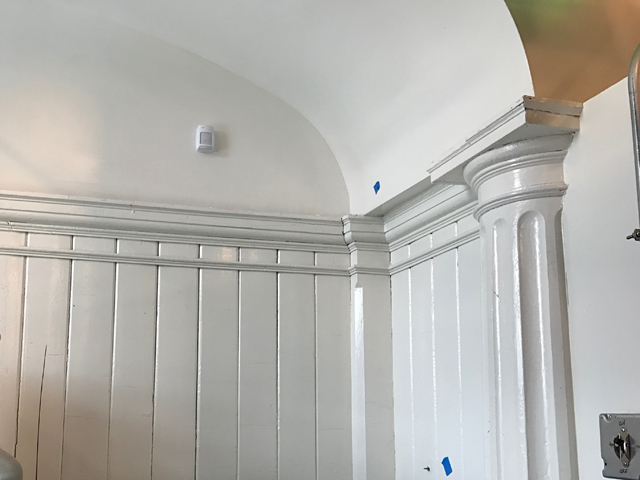
Though this first-floor space is packed full of shiny brewery tanks and machinery – which you can spy through the windows along the sidewalk – there’s still gorgeous old woodwork down here, too. Hiding in the back is the building’s boiler, painted like a PBR Tall Boy.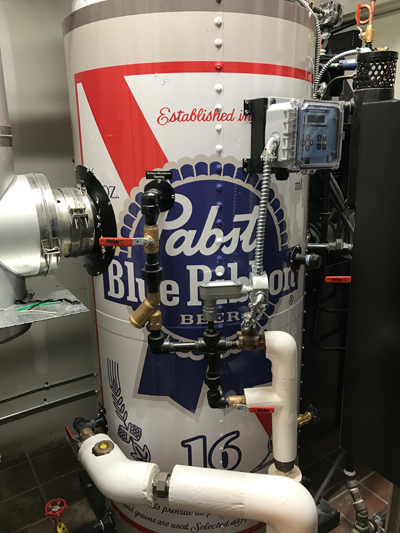
Though the Pabst Milwaukee Brewery won’t serve cocktails, tea-totalers will have options, says Berkshire.
"We’re trying to develop a nice beverage program that highlights different (local drinks) like Wisco Pop and Kickapoo coffee. We’re trying to keep the non-alcoholic beverage program as interesting as possible, just so if you're not a beer drinker, you'll still want to come in."
Head back to the entrance and choose one of two staircases that flank the main door to arrive upstairs in the main room, which is a stunner. And I say that as someone who saw this space at its lowest point, nearly a decade ago.
The balcony is still there – as is the banister on the curving staircase up – and so is the stage, which was, of course, built as an altar. The hardwood floors remain and so do the peaked Gothic windows on the east and west walls.
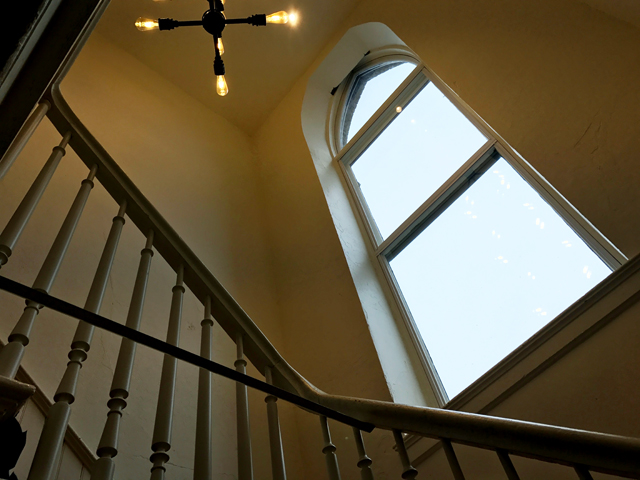
But there’s also a striking copper-covered bar wrapping around a trio of brewing tanks (also copper-clad). Sleek black lights dangle from the ceiling and are equipped with Edison bulbs, embodying the intersection of classic and modern.
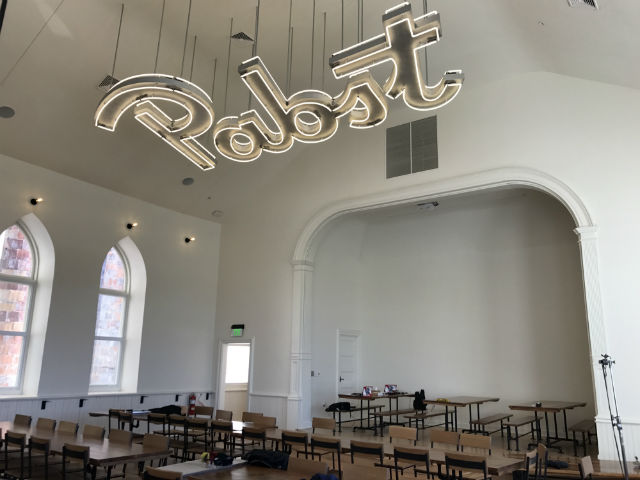
Most eye-catching of all is a neon Pabst sign (made by Western Neon) that hangs parallel to the floor and can be seen through the windows – even by motorists passing by on I-43 below.

"There will be drink rails along the side, and there will be four communal tables on the main floor," says Berkshire. "They seat about 12 apiece. And then there'll be three seven-foot tables on the stage, also communal seating, and those have benches."
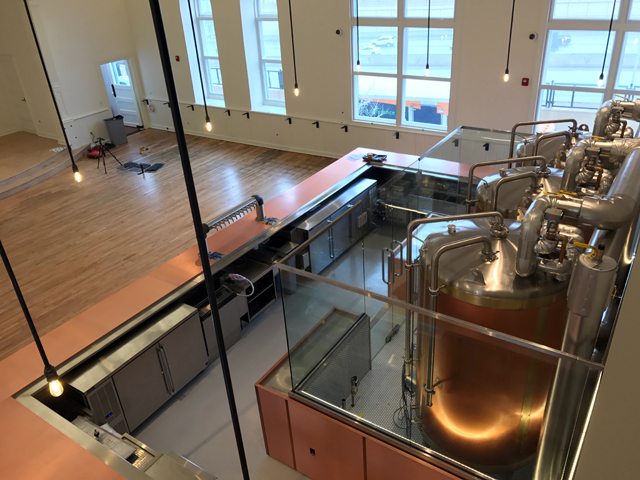
The balcony will be rented out for special events, but when the space is not reserved, guests will be able to cozy up in the two nooks with built-in bench seating or along the glass half-wall with its view over the action downstairs.
My favorite view was from the old bell tower, accessed by a rebar ladder that leads to a scuttle hatch opening into the windowless first level of the tower. On the south wall here there's an opening that leads to the attic above the ceiling of the main hall.

From here there's another 90-degree rebar ladder through a scuttle hatch into the area that has the arched windows you can see from the street. They offer a nice perspective on the freeway and Juneau Avenue but the building isn't tall enough to provide dazzling views.
Surprisingly there's very little graffiti on either level of the tower. On the window level, I found one bit from 1981, but that's it.
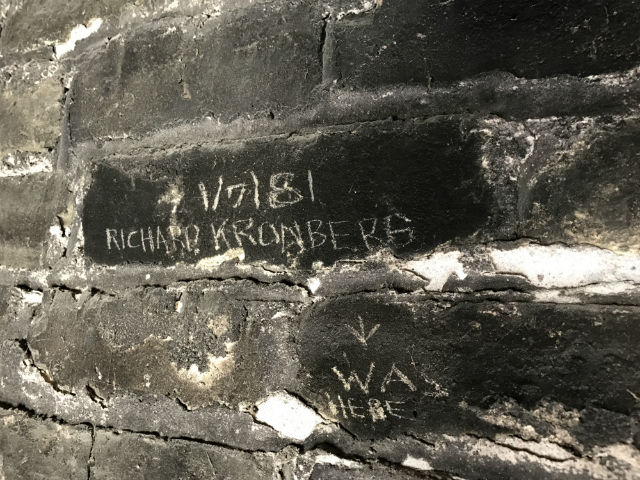
Unless you're allowed roof access, this is also as high as you can go.
Behind the stage is the full kitchen.

"Upscale, gastropub," is how Berkshire describes the menu. "We have a pretty solid menu at this point, but we’re working out the finer details.
"It’s a full menu. I wanted it to have the familiar Milwaukee bar food feel, but with attention to detail and ingredients. So, it's still approachable but it's still chef-driven. Locally sourced, sustainable."
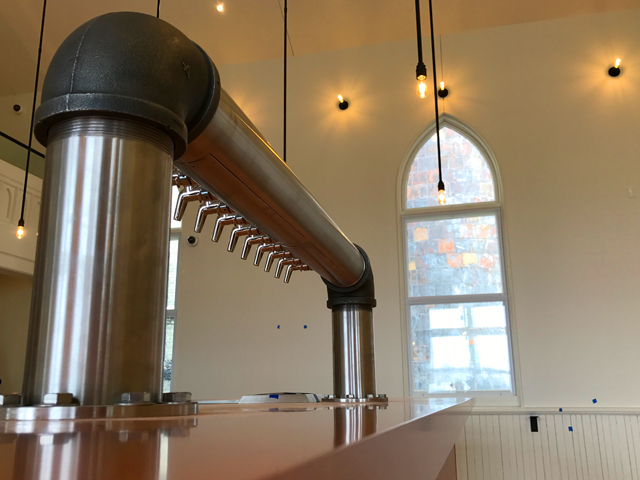
When Pabst added on to the south side of the building to create the kitchen and add an elevator for accessibility, it also created an outdoor patio, which will seat more than 100. Inside the capacity is about 400, which means that once it opens, the Pabst Brewing Milwaukee will be rocking on 10th and Juneau ... just as it had for more than a century in old Brew City.
Born in Brooklyn, N.Y., where he lived until he was 17, Bobby received his BA-Mass Communications from UWM in 1989 and has lived in Walker's Point, Bay View, Enderis Park, South Milwaukee and on the East Side.
He has published three non-fiction books in Italy – including one about an event in Milwaukee history, which was published in the U.S. in autumn 2010. Four more books, all about Milwaukee, have been published by The History Press.
With his most recent band, The Yell Leaders, Bobby released four LPs and had a songs featured in episodes of TV's "Party of Five" and "Dawson's Creek," and films in Japan, South America and the U.S. The Yell Leaders were named the best unsigned band in their region by VH-1 as part of its Rock Across America 1998 Tour. Most recently, the band contributed tracks to a UK vinyl/CD tribute to the Redskins and collaborated on a track with Italian novelist Enrico Remmert.
He's produced three installments of the "OMCD" series of local music compilations for OnMilwaukee.com and in 2007 produced a CD of Italian music and poetry.
In 2005, he was awarded the City of Asti's (Italy) Journalism Prize for his work focusing on that area. He has also won awards from the Milwaukee Press Club.
He has be heard on 88Nine Radio Milwaukee talking about his "Urban Spelunking" series of stories, in that station's most popular podcast.



